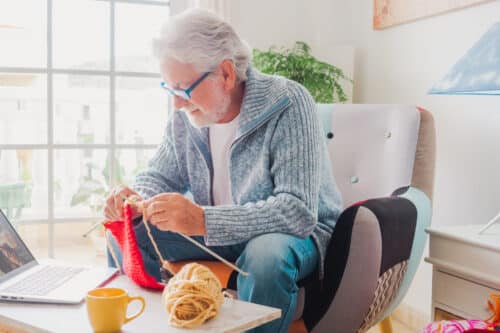Aging in Place Ableism Furniture
The question of what you want to own is actually the question of how you want to live your life.
– Marie Kondo (Interior Designer)
Aging in Place
I love furniture and have always been a Form over Function guy. To me, how it looked out weighted how it worked to support my body. But as the years have passed, I’ve noticed that ratio of Form to Function shifting to the Function side of the equation.
As my body has aged my requirements have evolved beyond mere provocative surfaces and now emphasize more comfort and support. Preferably neither must be compromised, and a third element of how it makes me Feel emotionally is a consideration. How the piece of furniture adds or takes away from my sense of functioning physically in the world (aka self-efficacy) takes on new meaning. The concept of Universal Design fundamentally covers all three aspects of Form, Function and Feeling—and it is easily applied to furniture for aging in place. This should be a part of the plan of remaining home by choice.
Universal Design
Universal design aims to create products and spaces that are accessible and usable by people of all ages, abilities, and backgrounds. When designing furniture with universal design principles in mind, here are some key features to consider:
- Accessible height: Ensuring that furniture heights accommodate a wide range of users, including individuals who use mobility aids such as wheelchairs or walkers.
- Clearance space: Providing adequate clearance space around furniture to accommodate wheelchair users and individuals with mobility impairments.
- Easy-to-reach storage: Incorporating storage solutions that are easily accessible from a seated or standing position, reducing the need for bending or reaching.
- Sturdy construction: Designing furniture with sturdy construction and materials to provide stability and support for users of varying sizes and abilities.
- Non-slip surfaces: Using non-slip materials for seating and tabletops to prevent accidents and provide a secure surface for users with limited mobility.
- Smooth edges and rounded corners: Ensuring that furniture features smooth edges and rounded corners to reduce the risk of injury, particularly for children and individuals with mobility limitations.
- Adjustable features: Incorporating adjustable features such as height-adjustable tables and chairs to accommodate users with different preferences and needs.
- Clear labeling and signage: Providing clear labeling and signage for furniture components, controls, and features to assist users with visual or cognitive impairments.
- Contrast and visibility: Using high-contrast colors and materials to improve visibility and make furniture elements easier to distinguish for users with visual impairments.
- Tactile cues: Incorporating tactile cues, such as textured surfaces or Braille labels, to assist users with visual impairments in navigating and using furniture.
- Flexible seating options: Providing a variety of seating options, including chairs with armrests and back support, to accommodate users with different comfort preferences and mobility needs.
- User-friendly mechanisms: Designing furniture with user-friendly mechanisms and controls that are easy to operate for individuals with limited strength or dexterity.
- Space for assistance: Ensuring that furniture layouts allow space for caregivers or assistants to provide assistance to users who may need help with tasks such as sitting or standing.
- Inclusive aesthetics: Creating furniture designs that are aesthetically pleasing and inclusive, avoiding stigmatizing or segregating designs that may single out users with disabilities.
A Must Watch:
Checkout this video from Artist Emily Barker where she suggests how to build out a living space suitable for disabled people: Art in the Name of Accessibility

